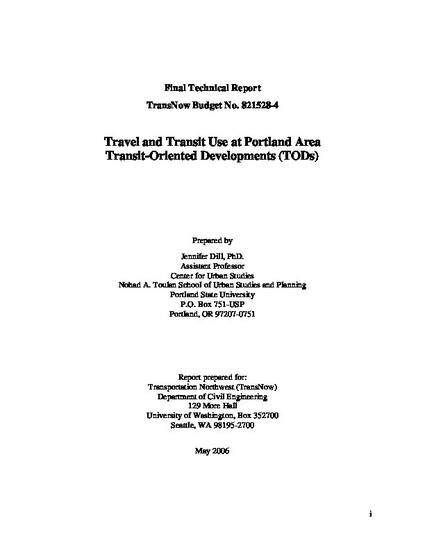
- Transit-oriented development -- United States,
- Urban transportation policy,
- Transportation -- Planning,
- Transit-oriented development -- Oregon -- Portland Metropolitan Area -- Evaluation
In recent years there has been a growing interest in using land use planning to reduce reliance on the automobile long-term, through ideas such as smart growth, New Urbanism, pedestrian pockets, and transit-oriented development (TODs). Many growing regions throughout the United States, are turning to these concepts to address problems of traffic congestion and suburban sprawl. However, the effectiveness of such policies in reducing automobile travel and improving livability is largely unknown. Portland was one of the early adopters and is often pointed to as a model for other regions. The Region's 2040 Growth Concept, adopted by the Metro regional government, includes many smart growth concepts. Metro uses a number of programs and policies to implement the 2040 Growth Concept, including subsidies to transit-oriented developments. This research surveyed residents of TODs in the Portland area to help answer the following questions: Do residents of transit-oriented developments (TODs) drive vehicles less, use transit more, and/or walk and bicycle more than residents of other neighborhoods? To what extent can TODs increase transit ridership? How do the features of the TOD influence travel choices? Do the features of TODs induce people to change their travel behavior? Alternatively, are people who move to these neighborhoods already active transit users, walkers, or cyclists, i.e. they are seeking an environment in which to practice their preferred travel behaviors? These questions are key to understanding the cause-effect relationship between the built environment and travel behavior. How do people's attitudes towards travel and their neighborhood influence travel behavior?

This document is disseminated through the Transportation Northwest (TransNow) Regional Center under the sponsorship of the U.S. Department of Transportation UTC Grant Program.
This document is available to the public through the National Technical Information Service, Springfield, VA 22616.